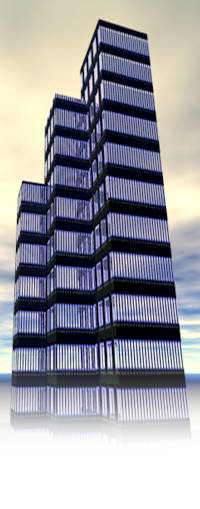When I wrote in the last issue of my concern that the LEED system could be gamed, what I meant was that like any system, one could approach it per the table below with the plan of extracting maximum LEED points for minimum expenditure of design effort, and thus perhaps forget the reason for the system in the first place.
The certifications exist to encourage doing the right thing via formal recognition that it is the right thing, and they were first developed (in 1998) to encourage such practices in new construction. One has to begin somewhere, and new construction is less complicated than retrofit work, both from design and operational/financial points of view, so it was the logical place to start from.
This relative straightforwardness is reflected in the LEED point totals, the “MAXIMUM POINTS” column in the tabulation below, where one can infer relative complexity from the order in which I’ve arranged the categories. That is, while a “perfect” LEED score for New Construction would be 69 points, the same for Existing Buildings amounts to 85 points. One can see this notion of total points being related to complexity reinforced by noting that perfect scores for the Core and Shell (i.e., a speculative [as yet untenanted] office building) and Commercial Interiors (i.e., fit-out of a tenant space in such a building) categories fall off to 61 and 57 points respectively.
Each of the LEED construction categories is rated in six areas; Sustainable Sites, Water Efficiency, Energy & Atmosphere, Materials & Resources, Indoor Environmental Quality, and Innovation & Design Process.
As one might expect, a substantial portion of the 26 point difference in perfect scores between the New Construction and Existing Building categories is in Energy & Atmosphere, with 23 possible points in Existing Buildings as compared to 17 possible points in New Construction. Similarly, one sees a big chunk of the difference in Indoor Environmental Quality with 22 possible points in Existing Buildings vs. 15 points in New Construction.
Together, these categories comprise half of the difference in complexity between doing a green building from the ground up and doing a green retrofit on an existing building.
OK, so after I opened this piece stressing the importance of applying LEED rather than gaming it, I’ve done little except talk about points. Not only that, but the “enginerd” in me felt it necessary to include the matrix of categories and ratings below. Sorry, but it’s just my roundabout way of showing that, relative to each other, the various categories require approximately the same percentage of effort to achieve like ratings, and to explain that one would expect bringing an old building up to current standards would involve more than starting from a clean sheet of paper with a new building.
Why am I doing this? Well, it’s kind of a “twofer.” You perhaps, get to become more familiar with the particulars of what LEED is all about, and I, by virtue of how I intend to expand this into several future issues where I discuss in some detail the kind of LEED stuff I as an engineer would be concerned with, and how I might implement it, prepare myself for the LEED-AP rating I spoke of in the last issue.
With that, let’s get right on into it.
I’ll be going through the six areas in the order in which they were mentioned at the bottom of the fourth paragraph of this piece, which is how they’re ordered by the USGBC.
The first, Sustainable Sites, contains sub-categories, such as Alternative Transportation, which are largely the province of my Architectural brethren (und schwestern), but even it deals with things such as Stormwater, Light Pollution, and Heat Island reduction which are near and dear to my heart; along with being near and dear to my left hemisphere (which is also near and dear to my heart – as well as to the rest of me).
Stormwater? Yeah, well in the old days we were simply concerned with controlling (to the extent possible) flooding. Lately, we’ve realized it’s probably a good idea to get that water back into the ground rather than discharging, via storm sewers, to rivers and ultimately to oceans. I mean it comes out of the sky as fresh water, which we can drink – duh. If it’s in the ground, drilling a well is no biggie, especially when compared to building a desalinization plant, which is what ya gotta do if you’d like to use seawater for drinking.
This is so tough to figure out?
Light Pollution? Lemme see . . . We need
outdoor artificial lighting to avoid walking into, driving
into, or otherwise colliding with, unseen
objects after the sun and moon go down. Why do you and I, in our dwellings across the street or field have to be blinded by schoolyard or street lighting?
I don’t suppose we do. If you design to direct the light only where it’s needed, you can get the necessary light, without wasting additional power to blind neighbors.
What a concept. More next issue. Soon.
LEED CATEGORIES AND RATINGS
MAXIMUM PLATINUM GOLD SILVER CERTIFIED
CATEGORY POINTS POINTS (%) POINTS (%) POINTS (%) POINTS (%)
LEED(Commercial Interiors) CI 57 42 73.7 32 56.1 27 47.4 21 36.8
LEED (Core & Shell) CS 61 45 73.8 34 55.7 28 45.9 23 36.7
LEED (New Construction) NC 69 52 75.4 39 56.5 33 47.8 26 37.7
LEED (Existing Buildings) EB 85 64 75.3 48 56.5 40 47.1 32 37.7
